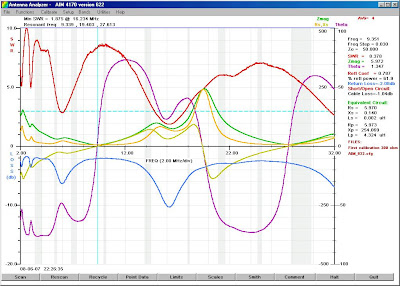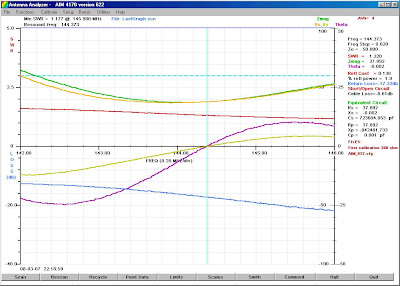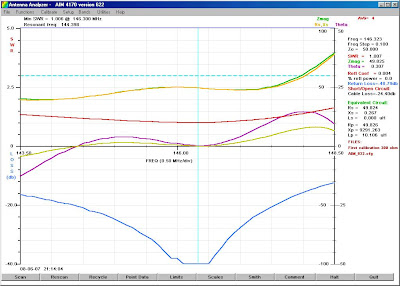Antenna is definitely an overstatement in this case.
There is no chance to place any piece of wire outside the building, so I'm left with little choice on HF. I could build a small indoor antenna or try to use what's already available.
My operating hours fall at late evening or at night, so my preference is to use 3.5, 7 and 10 MHz bands. Anything that fits indoors and can be quickly assembled/disassembled would be rather inefficient at these frequencies. But what about the balcony with a 10-meter railing made of aluminium?
The picture below shows a model of the balcony railing. Imagine it's on the first floor, with one balcony below and several above and next to it. To the right there is a massive steel structure which extends horizontally and vertically along the exterior of the building. Amazingly, my balcony is the only one which
is not directly connected with this structure.

The railing is fed at the bottom right of the picture with RG-58 cable. The coax shield is connected to the metal structure. I use crocodile clips to attach the feedline to this bizzare antenna only when it is about to be used.
I realize this antenna is not very efficient, its radiaton pattern is random, there's a lot of losses in the surrounding metal objects and in the ground, etc. I am really surprised that the built-in antenna "tuner" (or matching circuit, to be correct) in my transceiver does actually match the antenna impedance on all HF bands with SWR values below 1.2! I suppose this piece of railing might be a wideband radiator (it's quite different from a copper wireline) with resonance on 7 or 10 MHz, where it is about a quarter wavelength.
Another challenge is the amount of interference I notice on all bands. It starts below 1 MHz and extends well above 30 MHz, with local peaks and minima. 10 MHz is mostly quiet, but 3.5, 7, 14, 18 and 21 MHz are full of S9 noise (at 3 kHz IF bandwidth). Using a narrowband filter (I use 250 or 500 Hz on CW) helps reduce the interference a bit, but even then it's only possible to copy only strong stations.
The noise is definitely radiated by AC power lines inside the building. I suspect it's one of the "Ethernet over AC line" systems, probably dLAN by Devolo, recently selected by the national Dutch telephone company.





